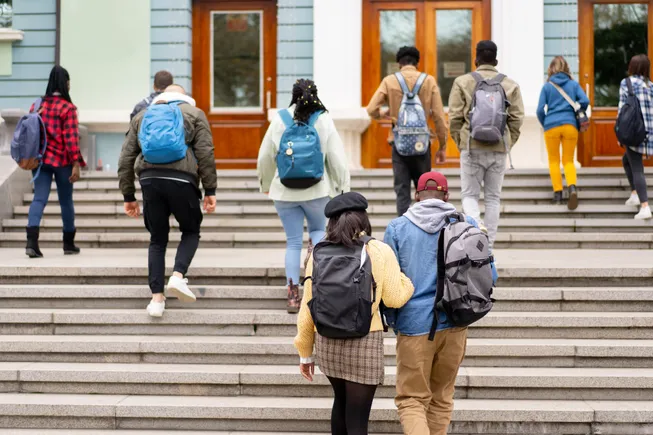Dive Brief:
- State and federal funding for public colleges can lead to inequities, with the highest levels of funding going toward institutions with the lowest proportion of students of color, according to a November study from the State Higher Education Executive Officers Association.
- Moreover, the study found that large proportions of students of color and students who qualify for Pell Grants are concentrated in a smaller share of institutions.
- “Despite efforts to promote diversity and equity by race/ethnicity and socioeconomic status, many institutions fall short of diversifying their student body and enrolling representative populations of students of color and low-income students,” SHEEO Senior Policy Analyst Rachel Burns wrote in the report.
Dive Insight:
SHEEO’s paper analyzed federal enrollment data between 2008 and 2022 to look for inequities in public funding for higher education, defined in the study as “the extent to which unequal distribution of financial resources disproportionately harms students of color and low-income students.”
Burns found that 35% of reviewed institutions had relatively high percentages of students of color and relatively low per-student public funding. Meanwhile, another 36% showed just the opposite: low percentages of students of color and high per-student funding.
“This means that the highest levels of funding are directed toward institutions with the lowest proportion of students of color, and students of color on average are attending institutions with the lowest per-student funding,” Burns wrote.
The findings were similar for institutions that enroll high proportions of Pell Grant-eligible students.
“Prior to 2021, students from the highest income categories attended institutions with the highest per-student funding, while students from the lowest income categories attended institutions with the lowest per-student funding,” Burns wrote.
But the data after 2021 also suggested those gaps could be closing, with students from the highest income groups shifting into institutions with lower levels of funding.
The SHEEO paper also found evidence of inequality, defined as “whether financial resources are unequally distributed across institutions.”.
In the bottom 20% of institutions, funding ranged up to $2,690 per student. But at the top 20% of institutions, funding ranges varied more and were much higher, from $7,589 to $163,052 per student.
The paper suggests that states and federal regulators can take inequity measures into account when drawing up funding formulas.
“While inequality is often a feature of the formulas used to disburse funding to institutions, inequity by student demographics can exacerbate gaps in student success and attainment,” Burns wrote. “Only when we acknowledge the extent to which financial resources are disbursed inequitably can we begin to address and resolve the potential harms to students.”

